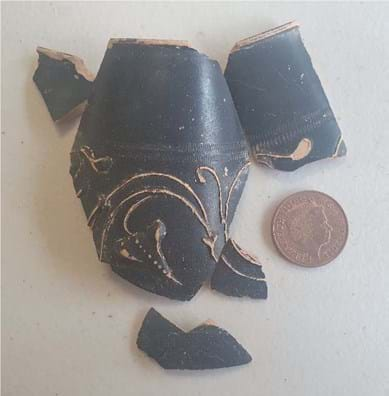Understanding our local history – archaeology on the A428 Black Cat scheme
Published
21 Oct 2020

Share this article
Understanding more about the historical environment is key to the development of the scheme.
Over the past eight months we’ve been examining 6000 years of human history. This ranges from the early prehistoric, in the Neolithic period (3500-2000 BC) to the post-medieval period (1540-1900 AD). We’ve been working with MOLA, our archaeological contractor, to excavate over 1300 trial trenches. The findings will show where we need to carry out more work.
To start with, we looked at historical records and aerial photos. We also used geophysical surveys to see beneath the soil. This helped us to find any potential areas of interest. It also showed where we should explore deeper with trenches. We then agreed our plans with landowners and the local authorities.
We used machinery to dig the trenches, and shovels and trowels to dig the archaeological features. Most trenches were two metres wide and up to 50 metres long. That’s the same length as an Olympic swimming pool. The trenches have now been back filled with the same soil that we excavated to reinstate the land for farming.
What we've found:
- Iron age ditches, boundaries and roundhouses
The roundhouses were made of wooden posts and thatch and were around 10 metres in diameter, the length of two pickup trucks. A large extended family of up to 20 people could live in one large house. Sleeping and food preparation would take place in separate areas. Cooking would be over an open fire in the centre of the building.
Throughout history some structures have changed shape. This might mean their purpose changed. This could be from houses to farm buildings. Some sites were continuously occupied from the Iron Age (700BC – 43AD) to the Romano-British (43-410AD) periods.
- Roman industry
We’ve found evidence of Roman industrial activity, including a kiln feature and quarries. We have also uncovered animal bones, a glass bead, pottery and ceramic vessels from the Bronze Age (2000-700BC), Iron Age and Romano-British periods.

What next?
At this stage, anything we find belongs to the landowner. If we do discover “treasure” in the future, we must report it to the coroner in 14 days. During construction, any key finds will be passed to the district archives. This means they can be curated in local museums.
Our ecologists are on site to ensure that we protect wildlife while we investigate the area. For example, after finding nests in the area, we changed the timing of some digs. This means we have avoided disturbing nesting sites during the breeding season.
Trial trenches have helped us determine which areas we need to explore more during construction. We’ve also identified some areas that do not need any further work. Finding this detail out now helps us avoid needless delays when we build the new road.
All this information will help us develop our mitigation strategy. The strategy will set out how we excavate and record sites. It will also detail management practices on site. This will include methods such as fencing to protect important areas. The strategy will be published when we apply for planning consent to build the scheme. The formal name for this process is a Development Consent Order.
Thank you to the landowners who have helped us uncover another chapter of the history of the area.
